Country
Operator Image
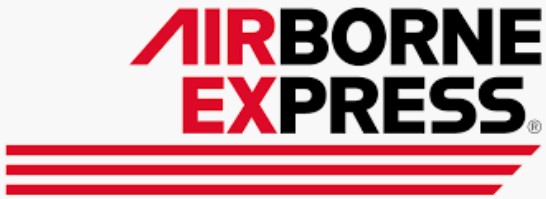
Crash of a Douglas DC-8-63F near Narrows: 6 killed
Date & Time:
Dec 22, 1996 at 1810 LT
Registration:
N827AX
Survivors:
No
Schedule:
Greensboro - Greensboro
MSN:
45901
YOM:
1967
Crew on board:
3
Crew fatalities:
Pax on board:
3
Pax fatalities:
Other fatalities:
Total fatalities:
6
Captain / Total hours on type:
869.00
Copilot / Total hours on type:
1509
Aircraft flight hours:
62800
Aircraft flight cycles:
24234
Circumstances:
The airplane impacted mountainous terrain while on a post-modification functional evaluation flight (FEF). The pilot flying (PF) had applied inappropriate control column back pressure during the clean stall maneuver recovery attempt in an inadequate performance of the stall recovery procedure established in ABX's (Airborne Express) operations manual. The pilot not flying (PNF), in the right seat, was serving as the pilot-in-command and was conducting instruction in FEF procedures. The PNF failed to recognize, address and correct the PF's inappropriate control inputs. An inoperative stall warning system failed to reinforce to the flightcrew the indications that the airplane was in a full stall during the recovery attempt. The flightcrew's exposure to a low fidelity reproduction of the DC-8's stall characteristics in the ABX DC-8 flight training simulator was a factor in the PF holding aft (stall-inducing) control column inputs when the airplane began to pitch down and roll. The accident could have been prevented if ABX had institutionalized and the flightcrew had used the revised FEF flight stall recovery procedure agreed upon by ABX in 1991. The informality of the ABX FEF training program permitted the inappropriate pairing of two pilots for an FEF, neither of whom had handled the flight controls during an actual stall in the DC-8.
Probable cause:
The inappropriate control inputs applied by the flying pilot during a stall recovery attempt, the failure of the non flying pilot-in-command to recognize, address, and correct these inappropriate control inputs, and the failure of ABX to establish a formal functional evaluation flight program that included adequate program guidelines, requirements and pilot training for performance of these flights. Contributing to the causes of the accident were the inoperative stick shaker stall warning system and the ABX DC-8 flight training simulator's inadequate fidelity in reproducing the airplane's stall characteristics.
Final Report:
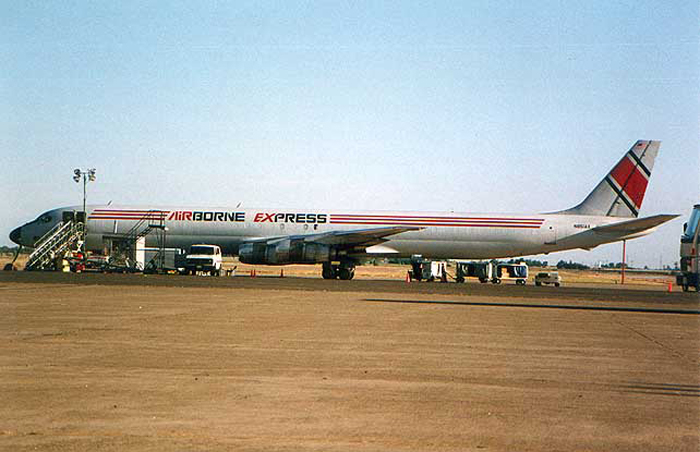
Crash of a NAMC YS-11A-205 in Wilmington
Date & Time:
Mar 6, 1992
Registration:
N918AX
Survivors:
Yes
Schedule:
Wilmington - Wilmington
MSN:
2112
YOM:
1969
Crew on board:
3
Crew fatalities:
Pax on board:
0
Pax fatalities:
Other fatalities:
Total fatalities:
0
Circumstances:
The crew departed Wilmington-Air park (Clinton County Airport) on a local training flight. On final approach to runway 22, the crew forgot to lower the undercarriage and the aircraft landed on its belly. It slid for few dozen yards and came to rest on the main runway. All three occupants escaped uninjured while the aircraft was damaged beyond repair.
Probable cause:
It was determined that the crew was focused on a flapless landing configuration and failed to follow the approach checklist and forgot to lower the landing gear.
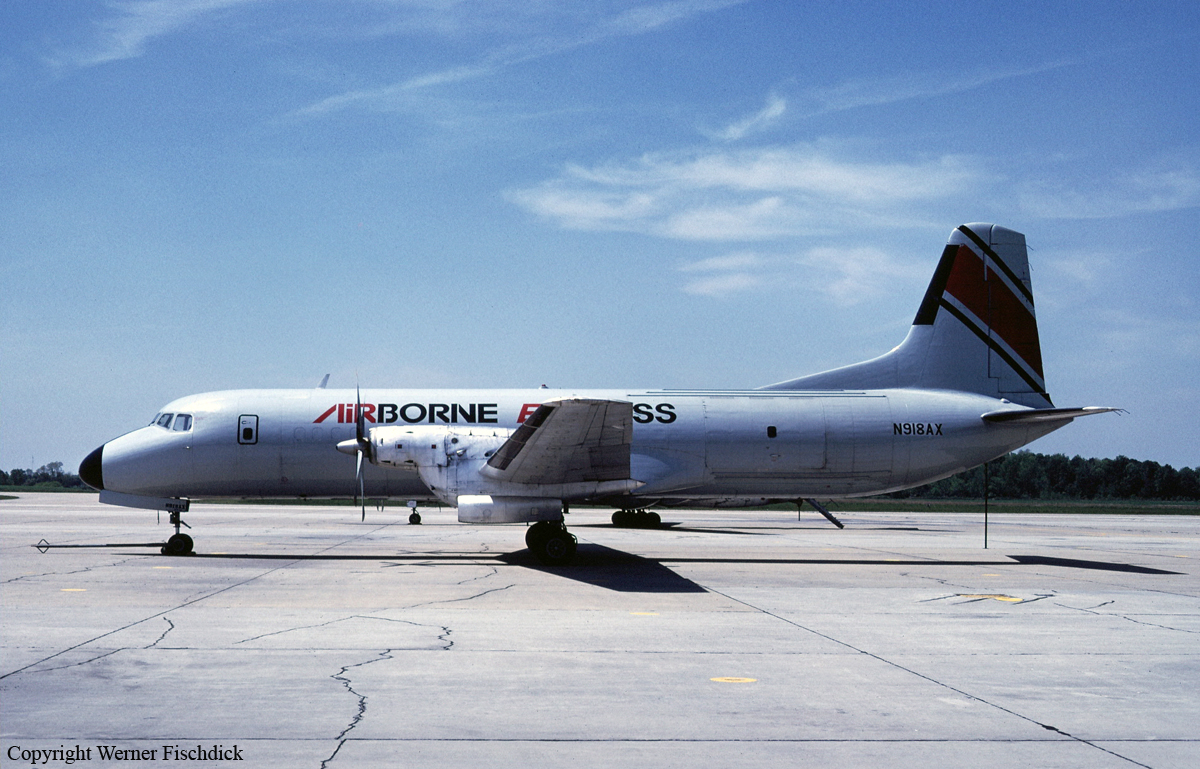
Crash of a Douglas DC-9-15 in Philadelphia
Date & Time:
Feb 6, 1985 at 2351 LT
Registration:
N926AX
Survivors:
Yes
Schedule:
Philadelphia - Wilmington
MSN:
47002
YOM:
1967
Crew on board:
2
Crew fatalities:
Pax on board:
0
Pax fatalities:
Other fatalities:
Total fatalities:
0
Captain / Total hours on type:
1800.00
Circumstances:
After landing, the aircraft was parked on the ramp for approximately 39 minutes to load cargo. During that time, light freezing drizzle was falling, intermittently mixed with ice pellets and snow. The crew checked the aircraft surfaces from the cockpit and entry door, but observed no ice or snow adhering to the tops of the wings, nose section, windshield or above the door. The captain declined an offer to de-ice, two other aircraft were being de-iced. The takeoff was normal (18° nose up attitude) until just after lift-off, then the aircraft entered an uncommanded left roll and both engines compressor stalled. The captain corrected with left aileron and rudder, then began aborting the takeoff. The aircraft touched down left of the runway on the tail skid and right wing tip, approximately 5,600 feet from the threshold and on a 070° heading. It then traveled another 2,025 feet in a sweeping right arc, hitting 2 runway signs and came to rest heading west with the right pylon bent down. Investigations revealed a thin layer of ice (est 0.15 inch thick) would have been on the wings, raising the aircraft's stall speed. When DC-9-15 aircraft stall, engines are susceptible to compressor stalls.
Probable cause:
Occurrence #1: loss of control - in flight
Phase of operation: takeoff - initial climb
Findings
1. (f) weather condition - rain
2. (f) weather condition - snow
3. (f) weather condition - icing conditions
4. (f) light condition - dark night
5. (c) wing - ice
6. (c) ice/frost removal from aircraft - not performed - pilot in command
7. (f) visual/aural detection - pilot in command
8. (c) stall - inadvertent - pilot in command
----------
Occurrence #2: loss of engine power (total) - nonmechanical
Phase of operation: takeoff - initial climb
Findings
9. Aborted takeoff - initiated - pilot in command
----------
Occurrence #3: in flight collision with terrain/water
Phase of operation: takeoff
----------
Occurrence #4: on ground/water collision with object
Phase of operation: other
Phase of operation: takeoff - initial climb
Findings
1. (f) weather condition - rain
2. (f) weather condition - snow
3. (f) weather condition - icing conditions
4. (f) light condition - dark night
5. (c) wing - ice
6. (c) ice/frost removal from aircraft - not performed - pilot in command
7. (f) visual/aural detection - pilot in command
8. (c) stall - inadvertent - pilot in command
----------
Occurrence #2: loss of engine power (total) - nonmechanical
Phase of operation: takeoff - initial climb
Findings
9. Aborted takeoff - initiated - pilot in command
----------
Occurrence #3: in flight collision with terrain/water
Phase of operation: takeoff
----------
Occurrence #4: on ground/water collision with object
Phase of operation: other
Final Report:
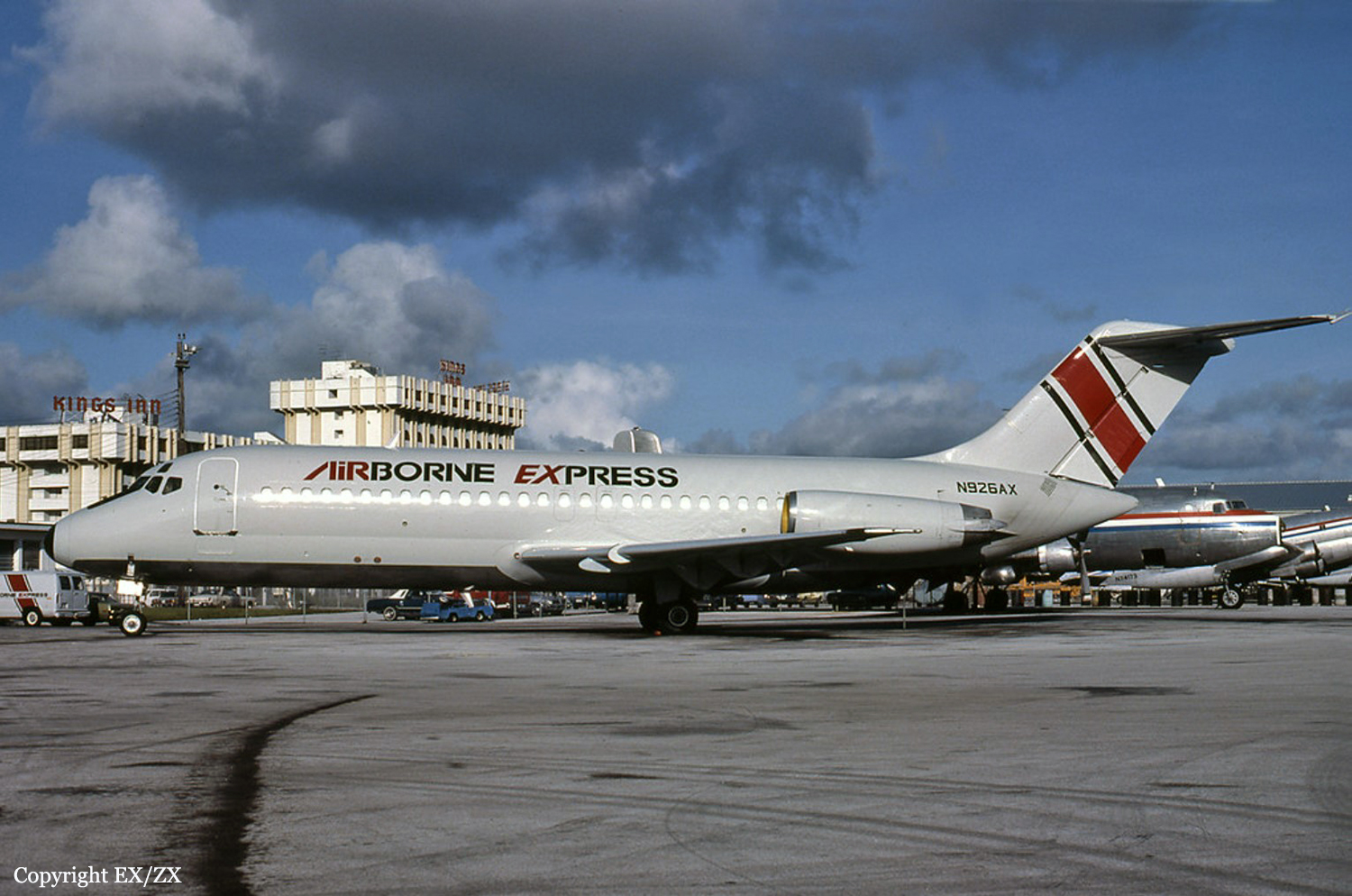
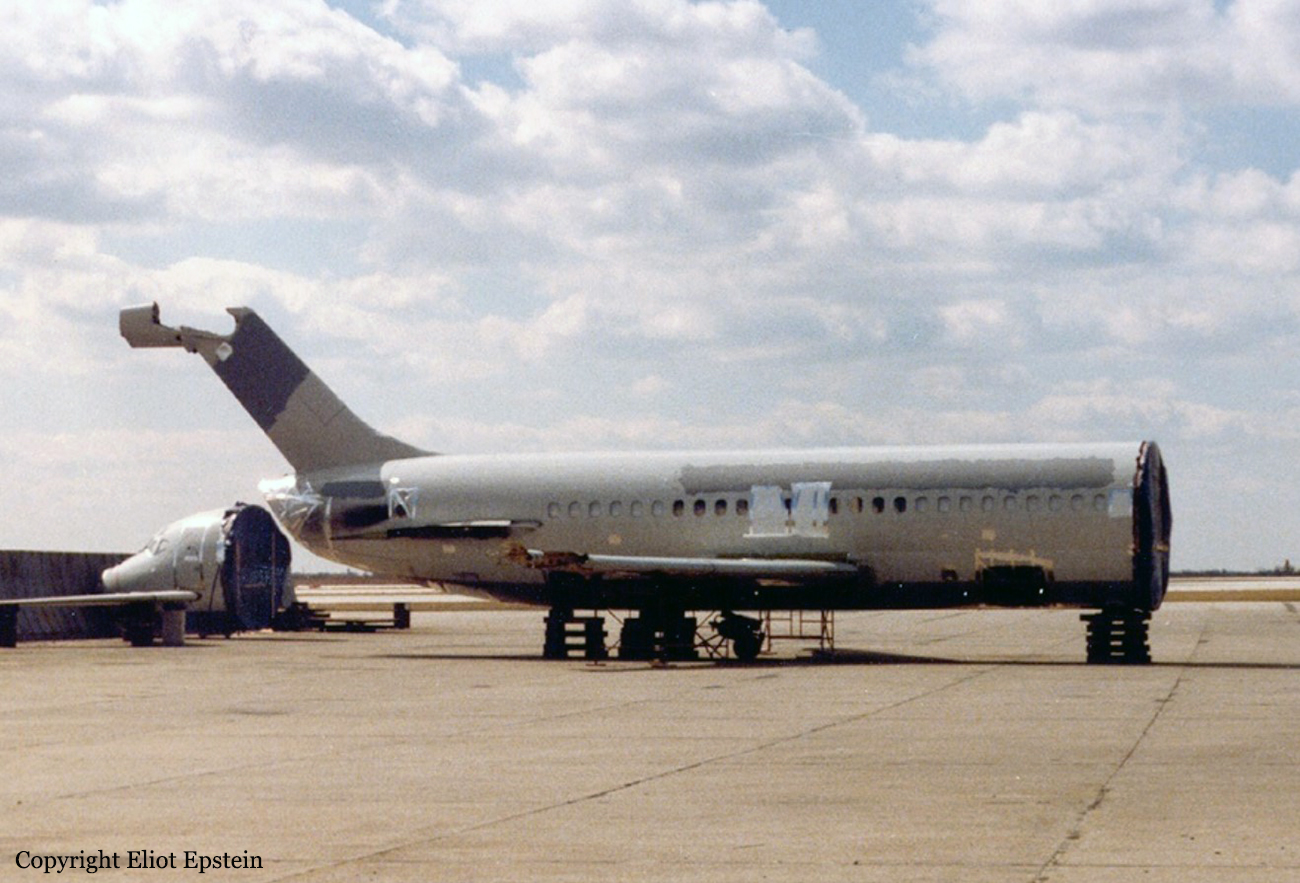
Crash of a Sud-Aviation SE-210 Caravelle VI-R in Atlanta
Date & Time:
Jun 19, 1980 at 0456 LT
Registration:
N905MW
Survivors:
Yes
Schedule:
San Jose - Wilmington - Atlanta
MSN:
95
YOM:
1961
Crew on board:
3
Crew fatalities:
Pax on board:
1
Pax fatalities:
Other fatalities:
Total fatalities:
0
Captain / Total hours on type:
1239.00
Circumstances:
The crew was completing a night cargo flight from San Jose, California, to Atlanta with intermediate stop in Wilmington, Ohio. On approach, the airplane became unstable and rolled left and right. Despite the situation, the crew decided to continue the approach to runway 26 when the airplane landed hard. Upon touchdown, the left main gear collapsed. The airplane rolled for about 4,526 feet then veered off runway to the left and came to rest 250 feet further in a grassy area. All four occupants escaped uninjured while the aircraft was damaged beyond repair.
Probable cause:
Hard landing and subsequent failure of the left main gear after the crew failed to follow approved procedures. The following contributing factors were reported:
- Poorly planned approach,
- Vortex turbulences,
- Fast from LOM to airport,
- Closed gap behind a Lockheed L-1011 Tristar that just landed on same runway.
- Poorly planned approach,
- Vortex turbulences,
- Fast from LOM to airport,
- Closed gap behind a Lockheed L-1011 Tristar that just landed on same runway.
Final Report:
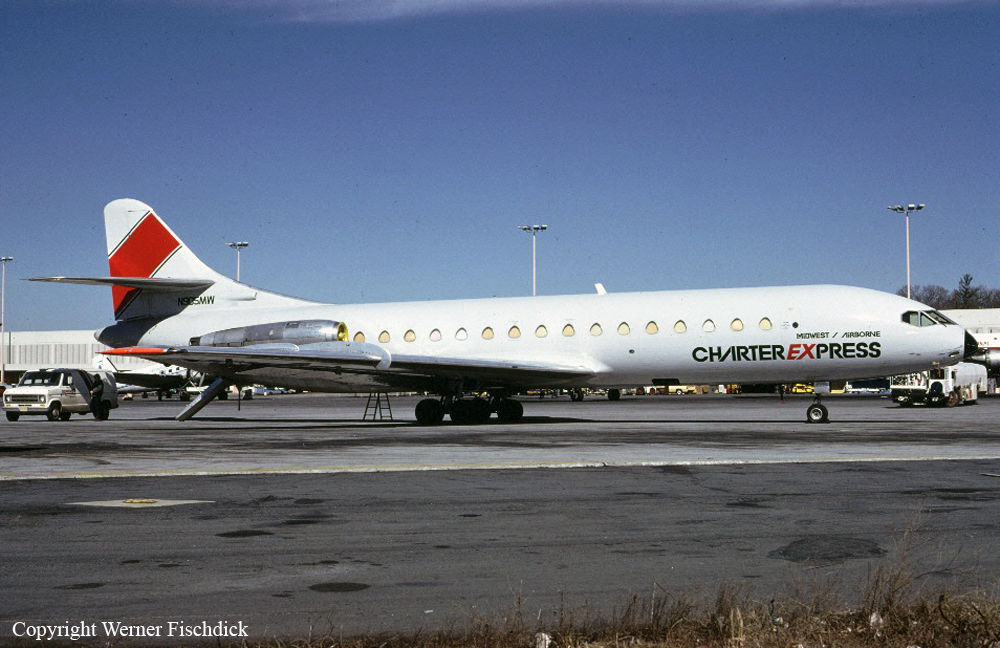

Crash of a Carstedt Jet Liner 600F in Saint Louis
Date & Time:
Jun 11, 1979 at 2152 LT
Registration:
N906MW
Survivors:
Yes
Schedule:
Kansas City - Saint Louis
MSN:
04449
YOM:
1954
Crew on board:
2
Crew fatalities:
Pax on board:
0
Pax fatalities:
Other fatalities:
Total fatalities:
0
Captain / Total hours on type:
651.00
Circumstances:
Upon landing at Saint Louis-Lambert Airport, the undercarriage collapsed. The airplane sank on its belly and slid for several yards before coming to rest. Both pilots escaped uninjured while the aircraft was damaged beyond repair.
Probable cause:
Gear retraction on landing following improper maintenance on part of the maintenance personnel. The following contributing factors were reported:
- Landing gear: normal retraction/extension assembly, improperly installed,
- Chafed,
- Pneumatic line to down port on nlg actuator chafed through.
- Landing gear: normal retraction/extension assembly, improperly installed,
- Chafed,
- Pneumatic line to down port on nlg actuator chafed through.
Final Report:
